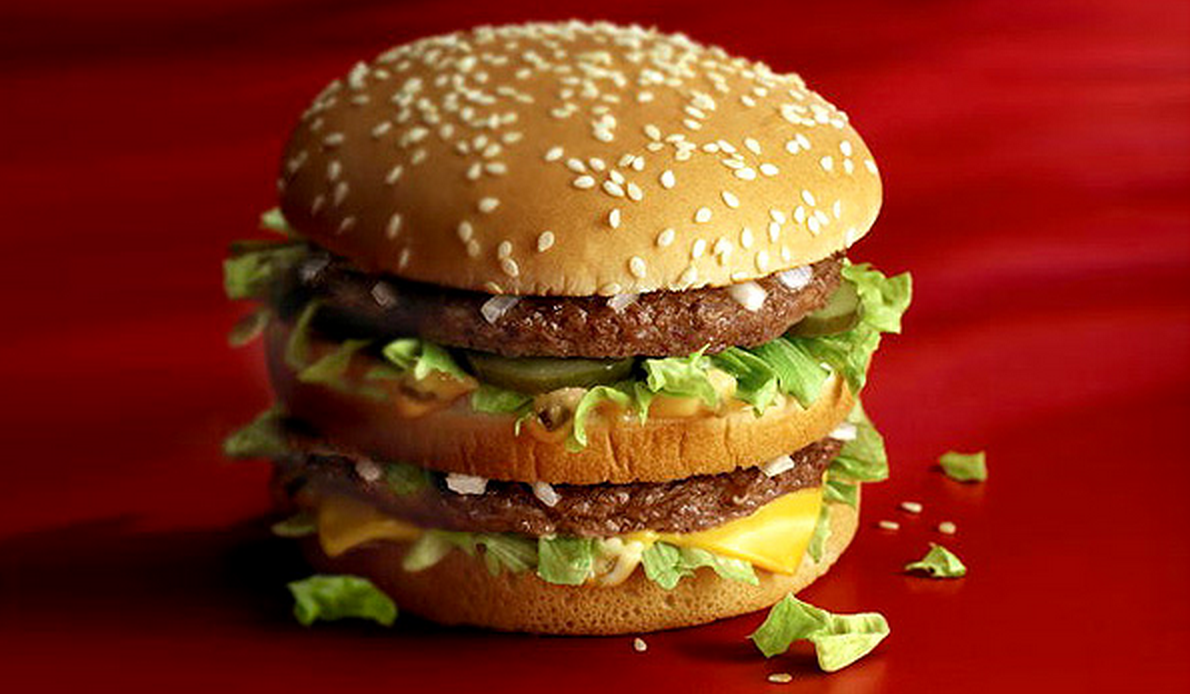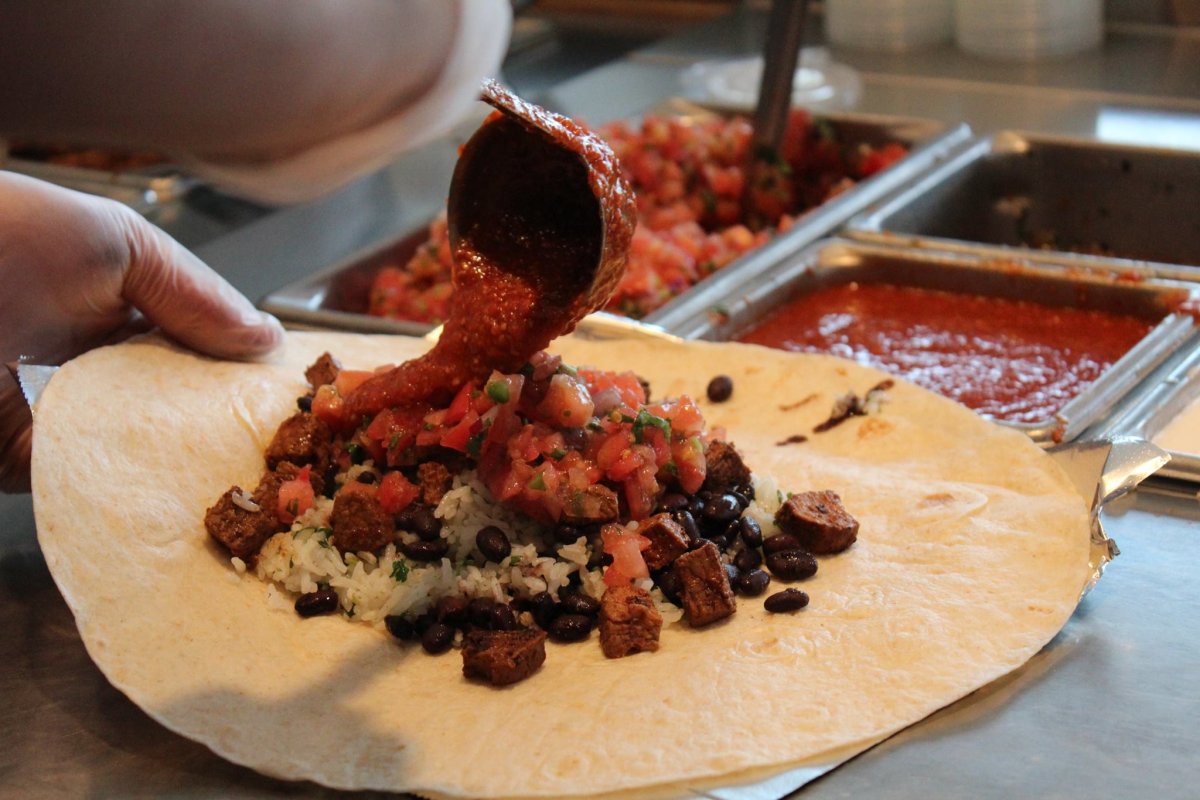Franchising, retail, business

02/03/2015
If you like to lunch on two all-beef patties, special sauce, lettuce, cheese, pickles, onions on a sesame seed bun, you’d better act fast: McDonald’s has announced plans to phase out the Big Mac.
Okay, not really. But social media ate up the news of its axing, published by the satirical site Daily Buzz Live at the end of last year.
As with the best fake news, it was grounded in truth. McDonald’s had announced that it had been testing menu cuts after finding that sales in November were down 4.6 percent compared to the previous year.
And more revealing than the Big Mac’s hypothetical retirement after almost 50 years on the iconic fast food chain’s menu waspeople's willingness — our eagerness, even — to believe that its demise might be possible.
With the rise of “fast casual” chains like Chipotle and Shake Shack, fast food is on the rocks, at least among the middle classes who can afford a $10 lunch instead of a $5 one.
Chipotle enjoyed a 16.8 percent increase in sales at stores open more than a year in 2014, and shares of Shake Shack — a self-styled “anti-McDonald’s” — doubled on the day of its January IPO, despite the fact that Danny Meyer's burger business only operates at 63 locations.
Even if this market shift hasn’t yet sent the Big Mac out to pasture, change is definitely coming. Among the menu items McDonald’s really is considering cutting is the Quarter Pounder with Cheese, a sandwich perhaps no less iconic than the Big Mac.
Franchise consultant Richard Adams told USA Today that items sometimes remain on the menu long after having ceased to sell well for what he called “politically correct reasons.” It’s a mixed metaphor, since the progressivism of PC would seem to imply a desire to cut high-calorie, high-fat, high-carbon-footprint items in favor of more physically and globally sustainable ones, as some of McDonald’s successful “fast casual” competitors have done.
Adams really means that certain McDonald’s menu items exist for reasons of rhetoric rather than gastronomy or sustenance. We don’t necessarily want to eat Big Macs or Apple Pies or Quarter Pounders, but we do want to consume the idea that we could eat them, even if we never intend to.
In our age of wanton disruption and renewal, it turns out that we still pine for our cultural icons, even if not enough to enact earnest exaltation for them.
Today’s hip fast casual diner might occasionally slum it at a McDonald’s, sometimes for ironic reasons, but more often to dip a toe into the roaring river of cultural and personal memory. In a recent paean to McDo, Paul Smalera puts his finger on the matter:
I come not to praise McDonald’s, but not, exactly, to bury it either. As for every other American kid growing up in the ’80s and ’90s, McDonald’s was The Special Treat. Especially when the kid was under the age of, say, 10. In the mall (another dying institution), for being good during mom’s race through the department stores, coupons in hand, a Happy Meal. Thru the Drive-Thru, after school, when mom had to go to work the overnight data-processing shift, and hadn’t had time to make a meal for me and my dad, chicken nuggets. For dad, who would be on his way home from his 5 a.m. - 4 p.m. shift at the machine shop, a Big Mac, though he would complain that it was “too much.”
Smalera distinguishes the personal and the patriotic strains of McDonald’s cultural history. Just by being there — and by being the same everywhere — McDonald’s offered succor. This was, after all, the fundamental promise of the fast-food chain: cheap, accessible food that would always be the same anywhere.
Even if we knew it wasn’t really food, exactly, sometimes convenience and comfort were more important. Particularly among the middle classes who were fortunate enough to appreciate McDo as the treat Smalera remembers, rather than as an affordable meal.
But with a Chipotle on every corner in gentrified America, practically, fast casual has become as convenient as fast food — perhaps even more convenient in the more affluent communities it targets. And so the Chipotle connoisseur darkens the drive-thru of a McDonald’s for comfort alone.
This isn’t a nostalgic or an ironic kind of comfort, even as it isn't one pursued for the sake of eating by oneself. When the modern, affluent customer makes an autumnal pilgrimage for a McRib or a vernal one for a Double Filet-O-Fish, he or she doesn't just do so for Instagram fodder.
The McRib reveals the weird science of processed fast food so as to help us construe it as normal. And the Filet-O-Fish connects drive-thru hamburgerdom with the sacrificial demands of Lenten Catholicism. These are acts infused with ritual instead of cynicism.
But the McRib and the Filet-O-Fish are still curiosities compared to the Quarter Pounder and the Big Mac, two hamburgers at the heart of a beloved, if struggling, paradigm. These latter menu items aren’t ironic curiosities so much as the very meat of fast food fandom. And more than that, too, they're a metric for American economic might, by means of the so-called Big Mac Index, whichThe Economist has long used to compare the relative purchasing power of different currencies.
Perhaps knowing it had to respond to the rumored removal of the mighty Mac, McDonald’s ran a new ad, titled “Ingredients,” during the 2015 Academy Awards, one fashioned explicitly for that broadcast.
As Claude Debussy’s “Clair de Lune” plays, the ad, which runs a full minute, cites classic films by enumerating their constituent elements. Swimmer + ocean + da dum + da dum. Fava beans + Chianti + people for dinner.
And then, finally, as the ad lumbers toward conclusion, the familiar jingle of ingredients for the Big Mac appear, slowly dancing to the surface of the screen in time with Debussy’s piano keys:
-two all beef patties +
-special sauce +
-lettuce + cheese +
-pickles + onions +
-sesame seed bun.
The ad exudes class and culture — of a certain kind. Debussy’s familiar, forlorn piano piece first appeared around the turn of the 20th century, when the moving picture itself was just emerging, poised to rise to the glory that would eventually justify the pomp of the Oscars.
By placing the Big Mac alongside films like Jaws and Silence of the Lambs and E.T. and Psycho and Rocky, McDonald’s successfully elevates the Big Mac to the status of cultural classic, but it also dates the burger, turns it into a has-been.
Many Oscar viewers today would have no more familiarity with Taxi Driver than they would with the Big Mac. A once gloried menu item has become, we must admit, the equivalent of a strange, old movie your dad makes you watch, muttering “it’s a classic!” in between scenes — or bites.
For those who would recognize it (did you?), the ad also invokes the insider knowledge of a mass-indie fashion meme made popular on the Internet: those Helvetica text t-shirts that list band members or movie characters separated by ampersands and line-breaks.
John & Paul & Ringo & George, or Venkman & Stanz & Spengler, for example.
The reference allows McDonald’s to try (and fail) to borrow the uniform one might wear to a burrito lunch at Chipotle, the name-dropping of band members or Ghostbusters as a side-dish to the name-dropping of fresh, local ingredients.
Mostly, though, the “Ingredients” spot’s combination of thick, slow text and plaintive piano exudes the affect of heavy conclusion.
On Oscar night, it most resembles the In Memoriam sequence, in which a similar montage of lost souls enter our attention just long enough to remind us that they once occupied far more of it.
It’s not as strange as it sounds, really. “I’m lovin’ it” isn’t such an inappropriate eulogy, whether for a grandmother or a global fast-food restaurant chain.
All classics are bittersweet, whether they’re vintage films or triple-bun hamburgers. Tender, they tug at our emotions, partly earnestly, partly in nostalgia for a joy that probably was never as joyous as the distortions of time and memory afford.
This is the same pain-tinged pleasure that Smalera brings to his eulogy of McDonald’s, too: “Our standards for freshness, quality and taste, mercifully, may have risen beyond the thousand-link logistical supply chain required to keep a place like McDonald’s perfectly homogeneous around the country and the world. But, there was a time.”
Such is the feeling of messy, genuine endings in an age that has fetishized tidy disruption. Real ends hurt even as they heal. This is why we were all so easily duped by Daily Buzz Live’s prank.
Just like Big Grandma, we have the sense that Big Mac’s time on earth is waning. It wasn’t unexpected, and it’s probably for the best. But it’s still a tough bite to swallow, one that puts a lump in your throat. Is this the quarterly earnings call we’ve been dreading?
Perhaps when they created this Oscar spot, McDonald’s didn’t realize that they were writing their own elegy. But, of course, no epitaph will really be written, not for an industrialized hamburger. The end of the Big Mac won’t be marked by a blank space on a menu or a declaration in a quarterly report.
It will be the thud of a feeling, one of affection and finalization. Just as Jaws introduced us to the blockbuster, so McDonald’s introduced us to the triple-tall hamburger. Like summer tentpole films, it seems obvious now, but once it was new, and then it was everywhere.
Until it’s gone, that is. “Once, we ate Big Macs,” you’ll tell your kids or your grandkids at Shake Shack as you glance idly at the mournful moon rising over the electric, robot cars whirring past outside.
“Were they good?” one will ask, teeth sinking into locally-sourced grass-fed beef. And you’ll pause for a beat, not wanting to romanticize as the jingle runs through your head, clear as it did in 1974 or 1984 or 1994, clear as Debussy’s piano has done for a century.
“No, not really,” you’ll admit. “But they were ours.”
Fonte:http://www.businessinsider.com/the-end-of-the-big-mac-is-coming-2015-3?nr_email_referer=1&utm_source=Sailthru&utm_medium=email&utm_term=Business%20Insider%20Select&utm_campaign=BI%20Select%20Weekend%202015-03-01&utm_content=BISelect&IR=T